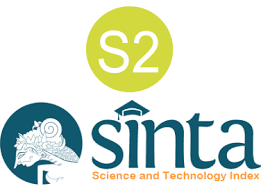Bencana dan Konflik: Pelajaran dari Aceh dan Sri Lanka
Abstract
Several academic studies have given birth to the notion that natural disasters and conflicts have a close relationship. Under certain conditions, the disaster functions to bring peace in conflict areas. However, it has not explained how the peace process can affect the dynamics of conflict. This paper aims to analyze the factors that cause conflict in a disaster area to transform into peace or vice versa. The prolonged social conflicts in the Indonesian provinces of Aceh (1976–2005) and Sri Lanka (1983–2009) are examples of cases where the tsunami disaster in December 2004 led to a peace agreement in Aceh, which was not long in the future while failing to bring peace to Sri Lanka. The research conduct with descriptive qualitative methods and internet-based literature study techniques. This paper finds that disaster is a catalyst for the peace process, not determining peace. The transformation of conflict into peace influence by four factors: poverty, state capacity, negotiations, and internationalization of conflicts. These factors that can create peace also depend much on pre-disaster and post-disaster peace efforts.
Full Text:
PDFReferences
Aspinall, Edward, 2005. The Helsinki Agreement: A More Promising Basis for Peace in Aceh?”. Policy Studies n20, Washington, DC: East-West Center
Bank Dunia. 2008. Dampak Konflik, Tsunami dan Rekonstruksi terhadap Kemiskinan di Aceh: Kajian Kemiskinan di Aceh tahun 2008. Jakarta: Bank Dunia
Barron, Patrick & Clark, Samuel. 2006. Decentralizing Inequality? Center-Periphery Relations, Local Governance, and Conflict in Aceh. Conflict Prevention and Reconstruction Paper No. 39. Washington, D.C: World Bank.
Brancati, Dawn. 2007. Political Aftershocks: The impact of Earthquakes on Intrastate Conflict. Journal of Conflict Resolution, 51(5), 715-743
Collins, Andrew E. 2009. Disaster and Development. New York: Routledge
Daly, Patrick and dkk. Aceh Pascatsunami dan PascaKonflik. KITLV-Jakarta. 2012
Darby, John. 2002. The Effect of Violence on Process. Washington DC: US Institute of Peace Press
Deloughery, Elizabeth and dkk. Global Ecologies and the Environmental Humanities: Postcolonial Approaches. Abingdon: Routledge
Forced Migration Review. 2005. Tsunami: Learning From The Humanitarian Response. Special Issue
Gaillard, Jean-Christophe, and dkk. 2008. Wave of Peace? Tsunami disaster diplomacy in Aceh, Indonesia. Geoforum, 39(1), 511-526
Goodhand, Jonathan & Klem, Bart. 2005. Aid, Conflict, and Peacebuilding in Sri Lanka 2000-2005. Sri Lanka: The Asia Foundation
Homer-Dixon, Thomas. 1999. Environment, Scarcity and Violence. Princeton: Princeton University Press
Jayasuriya, Sisira and dkk, 2006. Pemulihan Pasca-Tsunami: Masalah dan Tantangan di Sri Lanka, Jepang: Asian Development Bank Institute
Kelman, Illan. 2011. Disaster Diplomacy: How disasters affect peace and conflict. London: Routledge.
Kelman, Ilan. 2016. Catastrophe and Conflict: Disaster Diplomacy and Its Foreign Policy Implications. Brill Research Perspectives in Diplomacy and Foreign Policy, 1(1), 1-76
Kingsbury, Damien. 2006. Peace in Aceh: A Personal Account of the Helsinki Peace Process. 2006. Jakarta: PT Equinox Publishing Indonesia
Klitzsc, Nicole. 2014. Disaster Politics or Disaster of Politics? Post-tsunami Conflict Transformation in Sri Lanka and Aceh, Indonesia. Cooperation and Conflict, 49(4), 554-572
Lamont, Christopher.2015. Research Methods in International Relations. London: SAGE Publications Ltd
Le Billon, Philippe and Waizenegger, Arno. 2007. Peace in the Wake of Disaster? Secessionist Conflicts and the 2004 Indian Ocean Tsunami. Transactions of the Institute of British Geographers, 32(3), 411-427
Minear, L., & Smith, H. 2007. Humanitarian Diplomacy Practitioners and Their Craft . New York: United Nations University.
Moleong, Lexy J. 2000. Metodologi Penelitian Kualitatif. Bandung: PT Remaja Posdakarya
Quarantelli, Enrico Louis. 1998. What is a Disaster? Perspectives in the Question. London and New York: Routledge
Rajasingham-Senanayake, Darini. 2009. Transnational Peace Building and Conflict: Lessons from Aceh, Indonesia, and Sri Lanka. Journal of Social Issues in Southeast Asia, 24(2), 211-235
Siddiqi, Ayesha. 2018. Disasters in Conflict Areas: Finding The Politics. Disaster, 42(S2), S161-S172
Slettebak, Rune T. 2012. Don’t blame the weather! Climate-related natural disasters and civil conflict. Journal of Peace Research, 41(3), 163-176
Stokke, Kristian. 2005. After the tsunami: a missed opportunity for peace in Sri Lanka?. NIASnytt Asia Insights. Vol 2
Theisen, Ole Magnus and dkk. 2012. Climate Wars? Assessing the Claim That Drought Breeds Conflict. International Security, 36(3), 79-106
Uyangoda, Jayadeva. 2005. Ethnic conflict, the state and tsunami disaster in Sri Lanka. Inter-Asia Cultural Studies, 6(3), 341–52
Wieviorka, Michel. 2000. Contextualizing French Multiculturalism and Racism. Theory, Culture & Society. Sage Journal, 17(1), 157–162
Quarantelli, E. L. 1998. What is a Disaster? Perspectives in the Question. London and New York: Routledge.
Senanayake. 2009. Transnational Peace Building and Conflict: Lessons from Aceh, Indonesia, and Sri Lanka. Journal of Social Issues in Southeast Asia, Vol. 24, No. 2
Slettebak, R. 2012. Don’t blame the weather! Climate-related natural disasters and civil conflict. Journal of Peace Research
Theisen, O., Holtermann, H. H., & Buhaug, H. 2011. “Climate Wars? Assessing the Claim That Drought Breeds Conflict. International Security
Refbacks
- There are currently no refbacks.










